
HOME
INTRO
SYMBOLS
ALMANAC
ECONOMY
GEOGRAPHY
STATE MAPS
PEOPLE
FORUM
NEWS
COOL SCHOOLS
STATE QUIZ
STATE LINKS
BOOK STORE
MARKETPLACE
GUESTBOOK
CONTACT US


You may double left-click on a word on this page to retrieve its definition. Tweet Follow
Florida State American Folk Dance

6 State American Folk Dance: Square Dance
Posters and Photographs
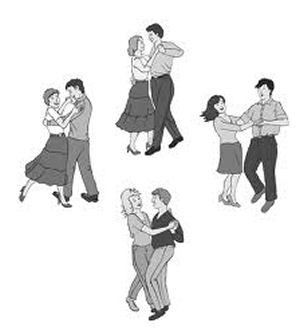
Florida State American Folk Dance: Square Dance
The United Square Dancers of America, Inc. (USDA) claimed that Florida had designated the square dance as its official folk dance.
However, we could find no evidence of this assertion though we scoured the internet lists of Florida state symbols and archived newspapers available.
This changed when first bits of evidence were found in The Florida Handbook and uncovered in the USDA's Chronology of the History of the United Square Dancers of America, Inc. where reference to the Florida designation was made in a summery of their annual spring meeting on June 27, 1986 in Indianapolis, Ind.
It was reported that Florida was the sixth State to designate "Square Dance" as their official Folk Dance. The campaign was chaired by Frank & Nan Habersberger (FL).
("United Square Dancers of America, Inc.")
With information from The Florida Handbook 2013-2014 and from the USDA we were able to locate documentation of House Concurrent Resolution No. 740 (HCR740), designating the square dance the official American folk dance of the State of Florida, in the 1986 Journal of the Florida House of Representatives and the 1986 Journal of the Senate.
We were also able to fill out our understanding of the adoption process by a large amount of information found in the meeting minutes of the Florida Federation of Square Dancers, Inc.
At this point, you might take a moment to check out a brief article about attempts to have the square dance designated the official state folk dance of the United States of America.
On November 24, 1985, Florida square dancers Nan and Frank Habersberger, in their capacity as chairmen of the USDA's National Folk Dance Committee, made a presentation at a meeting of the Florida Federation of Square Dancers, Inc.
At the time, the Habersbergers, living in Florida, also served as treasurers for the USDA as well as chairs of the USDA's National Folk Dance Committee.
The subject of their presentation was a feasibility study the Committee had concluded regarding the adoption of the square dance as the official American folk dance of Florida.
The USDA had experienced a number of defeats in their attempt to designate the square dance the official folk dance of the United States of America. But in 1982, President Ronald Reagan signed a measure, Senate Joint Resolution No. 59, in the USDA's favor. The measure did stipulate the square dance as the official folk dance of the nation but only for a period of two years.
PUBLIC LAW 97-188—JUNE 1, 1982
Public Law 97-188
97th CongressJoint Resolution No. 59
Designating the square dance as the national folk dance of the United States.
Whereas square dancing has been a popular tradition in America since early colonial days;
Whereas square dancing has attained a revered status as part of the folklore of this country;
Whereas square dancing is a joyful expression of the vibrant spirit of the people of the United States;
Whereas the American people value the display of etiquette among men and women which is a major element of square dancing;
Whereas square dancing is a traditional form of family recreation which symbolizes a basic strength of this country, namely, the unity of the family;
Whereas square dancing epitomizes democracy because it dissolves arbitrary social distinctions; and
Whereas it is fitting that the square dance be added to the array of symbols of our national character and pride: Now, therefore, be it
Resolved by the Senate and House of Representatives of the United States of America in Congress assembled, That the square dance is dance, designated the national folk dance of the United States of America for 1982 and 1983.
Approved June 1, 1982.
LEGISLATIVE HISTORY--S.J. Res. 59:
CONGRESSIONAL RECORD
Vol. 127 (1981): Sept. 23, considered and passed Senate.
Vol. 128 (1982): May 11, considered and passed House, amended.
May 19, Senate concurred in House amendment.
Though the USDA had made some progress toward their objective, the designation was not permanent. In response to the legislation, the USDA decided to change their strategy and focus on state level adoptions to accumulate more ammunition for a permanent national designation down the line.

Traditional Square Dance Musicians
The Habersbergers had already contacted Florida State Representative Walter Young and they brought a draft prototype of a resolution for introduction to the Florida State Legislature. They said Rep. Young was on board and ready to go.
They outlined the efforts that the Florida square dancers would need to make to accomplish the goal; square dance, official American folk dance of the State of Florida.
They offered their services to lead the campaign for an official state folk dance in Florida but emphasized that they would need the approval and the support of the Florida Federation of Square Dancers and their five member associations.
They additionally expressed a need for the support of the Florida Callers Association, the Round Dance Council of Florida, and other dance groups that would be considered part of the square dance family.
The Habersbergers made sure to impress upon the meeting attendees that it would take a lot of preparation, publicity and the concerted effort of everybody working together for at least two years to make the square dance the official American folk dance of the State of Florida. Their study also indicated that the time was right for the attempt.

Saturday Night Square Dancing (1942)
Response from the Florida Federation was positive and the campaign was off and running with Nan and Frank Habersberger at the helm
It came as quite a surprise to all involved when the two-year project was completed in about six months.
House Concurrent Resolution No. 740 (HCR740) was first presented by Rep. Young on April 8, 1986. On May 14, 1986, less than a month after its introduction, the resolution was approved by the Florida House of Representatives and forwarded to the Senate for consideration.
Introduced in the Senate on May 20, 1986, House Concurrent Resolution No. 740 was approved, unanimously, on the same day.
HCR 740
A concurrent resolution designating the square dance as the American folk dance of the State of Florida.
WHEREAS, love of state and professions is enhanced by the traditions that have become part of our way of life and the customs of the American people, and
WHEREAS, we have distinctive and meaningful symbols of our ideals in our state's flag and in many cultural endeavors but no official designation of a state folk dance, and
WHERAS, the square dance, which was first association with the American people and recorded in history since 1651, has consistently been the one dance traditionally recognized by the American people as a dignified and enjoyable expression f American folk dancing, and
WHEREAS, square dancing is the American folk dance which is called, cued, or prompted to the dancers, and includes squares, rounds, clogging, contra, line, and heritage dances, and
WHEREAS, official recognition of the square dance will enhance the cultural stature of Florida both nationally and internationally, and
WHEREAS, it is fitting that the square dance be added to the array of symbols of our state character and pride, NOW, THEREFORE,
Be It Resolved by the House of Representatives of the State of Florida, the Senate Concurring;
That the dance known as the square dance is hereby designated the American folk dance of the State of Florida
The approval of HCR740 by the Florida House of Representatives and the Florida Senate went so smoothly and so rapidly that we suspect that its adoption went relatively unnoticed except by those most involved in Florida square dancing.
The square dance is a popular type of folk dance in the United States. This dance for four couples, or groups of four couples, is performed in a compact framework of a square, each couple forming a side. Traditionally accompanied by a fiddle, accordion, banjo and guitar, the couples perform a variety of movements prompted by the patter or singing calls (instruction) of a "caller". Cooperative movement is the hallmark of well-executed square dancing.
Square dancing is to be distinguished from related dances called contra or longways dance where couples stand double file in a line and from round dances where couples stand in a circle. The origin of the square dance can be traced to English derivation and to the stately French cotillion performed in square formation that was popular at the court of Louis the fifteenth later replace by the quadrille (another square dance).
A brief description of the efforts to declare the square dance the national folk dance of the United States of America can be found here.
Florida Law
LIke the Florida state bird and the state flower, the square dance was adopted as official symbol of the State of Florida and is not recorded in the Florida Statutes.
Sources...
Byrd, Robert C., Senator. "S.J.Res.59 - A Joint Resolution Designating the Square Dance as the National Folk Dance of the United States." Congress.gov. Library of Congress, 1 June 1982. Web. 8 Jan. 2016.
"Chronology of the History of the United Square Dancers of America, Inc." United Square Dancers of America, Inc. United Square Dancers of America, Inc. Web. 18 Jan. 2016.
"Meeting Minutes." Florida Federation of Square Dancers, Inc. Florida Federation of Square Dancers, Inc., 24 Nov. 1985. Web. 18 Jan. 2016.
"Meeting Minutes." Florida Federation of Square Dancers, Inc. Florida Federation of Square Dancers, Inc., 18 Jan. 1986. Web. 18 Jan. 2016.
"Meeting Minutes." Florida Federation of Square Dancers, Inc. Florida Federation of Square Dancers, Inc., 19 Nov. 1985. Web. 18 Jan. 2016.
Morris, Allen, and Joan Pery Morris, comps. The Florida Handbook 2913-2014. 34th Biennial Edition ed. Tallahassee: Florida House of Representatives, 2014. Print.
Shearer, Benjamin F. and Barbara S. State Names, Seals, Flags and Symbols: A Historical Guide Third Edition, Revised and Expanded. Westport, Conn: Greenwood Press, 3 Sub edition, 2001.
Young, Walter. "First Reading by Publication." Journal of the Florida House of Representatives Eighty-eighth Regualr Session Since Statehood 1845 (1986): 73. Web. 8 Feb. 2016.
Young, Walter. "Special and Continuing Order Calendar." Journal of the Florida House of Representatives Eighty-eighth Regualr Session Since Statehood 1845 (1986): 354. Web. 8 Feb. 2016.
Young, Walter. "Bills and Joint Resolutions on Third Reading." Journal of the Florida House of Representatives Eighty-eighth Regualr Session Since Statehood 1845 (1986): 388. Web. 8 Feb. 2016.
Young, Walter. "Messages From the House of Representatives." Journal of the Senate State of Florida Eighteenth Session Under the Constitution Revised in 1968 (1986): 325. Web. 8 Feb. 2016.
Young, Walter. "Considerarion of Resolution." Journal of the Senate State of Florida Eighteenth Session Under the Constitution Revised in 1968 (1986): 336. Web. 8 Feb. 2016.
Additional Information
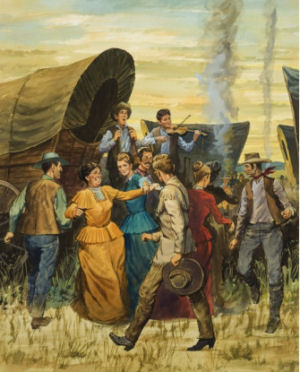
Florida State American Folk Dance: Square Dance
Posters and Photographs
Square Dancing 101: Square dancing basic including positions, formations, moves, and a glossary.
Video Square Dance Lessons Online: Video Square Dance Lessons Online and on DVD from Cyberpoint Marketing, LLC.
A Brief History of Square and Round Dancing: by Herb Egender.
Square Dancing: The Historical Geography of an American Folk Custom: by Richard M. MacKinnon, Allan Hancock College, Santa Maria, California.
Square Dance History Project: Website devoted to the documenting the history of square dancing with historical documents and an emphasis on imagery as much as possible.
History and Heritage of Modern American Square Dancing: A summary of the essays by Dorothy Shaw, Bob Osgood and Kenny Reese.
The State Folk Dance Conspiracy: Fabricating a National Folk Dance: by Judy Mangin - Originally published in the Old-Time Herald, v.4(7) p.9-12, Spring 1995.
National Folk Dance Effort Moves Forward: We're On Our Way Now, So Let's Make a Lot of Noise!: United Square Dancers of America National Folk Dance Committee.
The Square Dance Legislation Collection: American Folklife Center 1984/024, Compiled by Michelle Forner, Library of Congress, Washington DC, December 1994
Official website: The Florida Federation of Square Dancers, Inc.
State dances: Complete list of official state dances from NETSTATE.COM
More symbols & emblems: Complete list of official Florida state symbols from NETSTATE.COM.
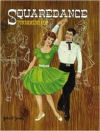
Square Dance Fundamentals
John W. Jones
Square Dance Fundamentals, John W. Jones. 208 pages. Publisher: BookSurge Publishing (February 5, 2007)
While there have been countless fun books written on square dancing, Squaredance Fundamentals was the first to cut to the chase. There is no interesting history of square dancing, there are no entertaining anecdotes, just the nuts and bolts of how to square dance. Revolutionary illustrations show the dancer’s point of view, not just the spectators’ viewpoint. Dancers can, without turning on their heads, glean from the detailed illustrations exactly what they need to be doing with their hands, feet, etc. Each dancer can effortlessly grasp the material and easily retain it. Renowned master caller/teacher, Marshall Flippo, assiduously assisted the author in establishing the very first guidelines for standardized “Basic Maneuvers” which would enable square dancers to dance gracefully with any group, anywhere.
No one shows you better how to execute the maneuvers than John W. Jones with his super simplified instructions and state-of-the-art illustrations in Squaredance Fundamentals - the gold standard for over 37 years.
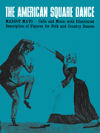
The American
Square Dance
Margot Mayo
The American Square Dance, by Margot Mayo. 116 pages. Publisher:Music Sales American (September 1, 2006)
You can have fun square dancing and you'll learn how to dance the figures and even learn how to call a square dance with Margot Mayo's classic manual, The American Square Dance. Here is the basic book for square dancers containing all of the essentials for many hours of enjoyment. An illustrated glossary of square dance terms shows all of the basic square dance figures – promenade, allemande left, do-si-do, etc. Complete instructions, calls and illustrated figures for 13 of the most popular American square dances appear, plus the music all ready for your pianist and fiddlers to play.
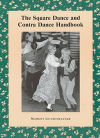
The Square Dance and
Contra Dance Handbook
Margot Gunzenhauser
The Square Dance and Contra Dance Handbook: Calls, Dance Movements, Music, Glossary, Bibliography, Discography, and Directories, by Margot Gunzenhauser. 320 pages. Publisher: McFarland & Company, Inc., Publishers; annotated edition edition (July 28, 2010)
This comprehensive guide to traditional style square and contra dancing, sometimes referred to as "country dancing," covers both music and style and gives background information on various dance types and calling techniques. Ninety dances, presented in chapters according to type (mixers, progressive circles, contra, Southern mountain style, squares and others), in a wide variety of formations are described with drawings and diagrams for many of the movements. A glossary of terms, a directory of addresses (organizations; vendors of books, recordings and audio equipment; and dance camps), and an annotated discography and bibliography are also provided.
A glossary of terms, a directory of addresses (organizations; vendors of books, recordings and audio equipment; and dance camps), and an annotated discography and bibliography are also provided.
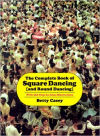
The Complete Book
of Square Dancing
(and Round Dancing)
Betty Casey
The Complete Book of Square Dancing (and Round Dancing), by Betty Casey. 208 pages. Publisher: University of North Texas Press (June 1, 2000)
This book includes: 50 basic movements, 35 advanced movements, variations, dances that are a part of the American heritage, Contra and Round Dances, polkas and reels, and calls, past and present.
“Square dancing is friendship set to music,” says author Betty Casey. Just take four couples, old or young, put ’em on a good floor, turn on the music, and you’re all set. Whether you’ve done it before or you’re just starting out, this book tells you everything you need to know—85 basic movements used all over the world, the spirited calls unique to square dancing, the costumes and equipment that are best, and music (from “Red River Valley” to “Mack the Knife”) that will set your feet in motion.
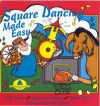
Square Dancing
Made Easy
Square Dancing Made Easy, Grade level: K-6. Audio CD (September 1, 1995), Number of Discs: 1, Label: Educational Activities, Inc.
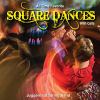
All Time Favorite
Square Dances
All Time Favorite Square Dances with Calls, Audio CD (September 8, 2009), Number of Discs: 1, Label: KADO, Run Time: 60 minutes.

Square Dance Music
& Calls
Square Dance Music & Calls, Audio CD (November 21, 2006), Number of Discs: 1, Label: Collectables Records.
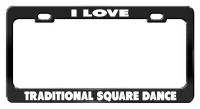
Black Metal
License Plate Frame
I LOVE TRADITIONAL SQUARE DANCE Black Metal Car Accessories License Plate Frame, This high quality license plate frame is made of metal, and it's the best quality item of its kind in the market. The lettering and art work are done by waterproof vinyl on the license plate frame and it will last for many years without any damage. It will not get brittle or cracked. It fits on all USA and Canada vehicles. It measures 12.5" X 6.5" and is durable to last under all weather conditions.
- Heavy Duty High Quality Metal License Plate Frame.
- Perfect Gift idea And Easy Installation.
- Rust, Corrode And Fade Free For Many Years.
- Fits all US and Canada License Plates.
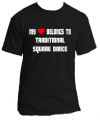
Traditional Square
Dance T-Shirt
MY HEART BELONGS TO TRADITIONAL SQUARE DANCE, This is a high quality pre-shrunk t-shirt that will not shrink or fade. It's comfortable, casual and loose fitting and will quickly become one of your favorites. It wears and looks well on anyone. It is cured with a heat treatment process to ensure lasting durability.
Brand New High quality preshrunk tee-shirt that will not shrink or fade. Double-needle stitched hemmed sleeves and bottom. Highest quality printing materials. 50% Cotton, 50% Polyester preshrunk blend. Soft, comfortable and weighs 6 oz.
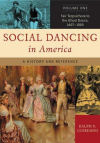
Social Dancing in America: A History and Reference (Volume One), by Ralph G. Giordano. 380 pages. Publisher: Greenwood (November 30, 2006)
Social Dancing in America examines the role of social dancing in daily life from the first settlements in 1607 through the birth of the nation in 1776 and into the beginning of the 21st century. This two-volume set provides a history of American social dances including the Virginia Reel, Square Dancing, the Lindy Hop, Rock 'n' Roll, the Twist, Disco, Breakdancing, and Hip-Hop. Social Dancing in America places social dancing in a historical, social, cultural, and political context.
Volume 1 explores the integral role that social dancing played in the lives of Americans from the first settlements in 1607 through the 19th century, often in the most unlikely of ways. For example, readers may be surprised to learn that George Washington was a well-known aficionado of social dancing, and that he incorporated the etiquette and manners of dances such as the Minuet as a means of diplomacy to secure European allies during the Revolutionary War. After his death, Americans continued to celebrate his birthday with a grand ball that included dancing.
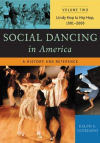
Social Dancing in America: A History and Reference (Volume Two), by Ralph G. Giordano. 428 pages. Publisher: Greenwood (November 30, 2006)
Volume 2 places social dance in a 20th-Century context, illustrating how social dancing itself paralled the social, economic, and cultural traditions of each era. For example, segregation and the Jim Crow mentality was cemented in place all over the United States, and for much of the century, dancing and dance halls were strictly segregated. Segregation forced a mass migration north, and with it came the transformation of Delta Blues music into an American original—Jazz. Jazz gave birth to the Charleston, and later evolved into Swing, which created the Lindy Hop. Later, with the advent of television, programming such as American Bandstand, Soul Train, Dance Fever, and MTV greatly influenced dance styles and modern trends such as Rock 'n' Roll, Freestyle, Disco, Breakdancing, and Hip-Hop.

